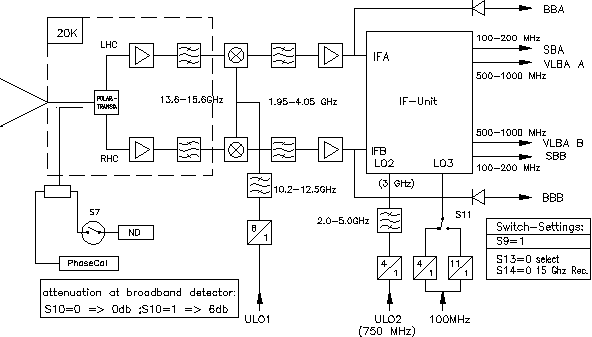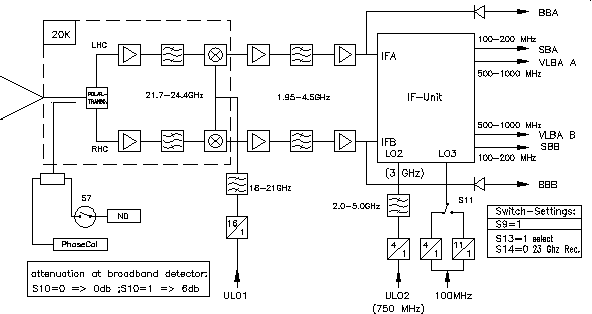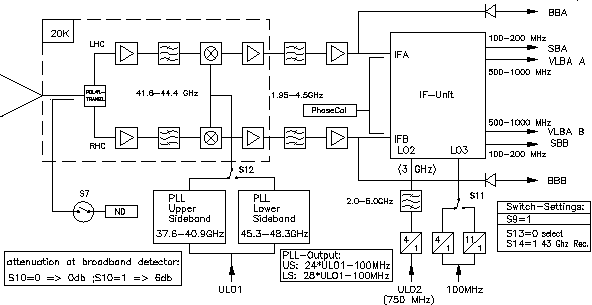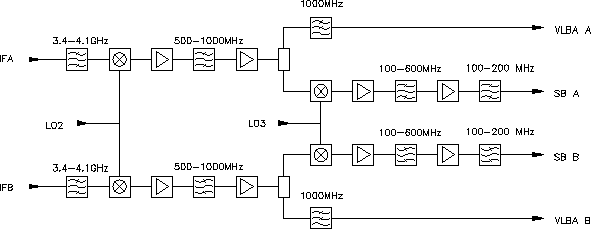| Type | HEMT, cooled |
|---|---|
| Channels | 6 |
| Receiver Noise Temperature | 15 GHz: 30K 23 GHz: 30K 43 GHz: 73K |
| Frequency Range | 15 GHz: 14 - 16 GHz 23 GHz: 21.65 - 24.35 GHz 43 GHz: 41.6 - 44.4 GHz |
| Bandwidth RF-Filters | 15 GHz: 2GHz 23 GHz: 2.7 GHz 43 GHz: 2.8 GHz |
| Polarization | LHC/RHC |
| Calibration | Noise Diodes |
| Feed | Secondary Focus Feeds |
| 1. IF | 1.95-4.05 GHz |
| 1. Oscillator | ULO1: 2cm: 1456.25 - 1443.75 MHz 1.3cm: 1.125 - 1.312 GHz 0.7cm: |
| 2. IF | 3.4 -4.1 GHz |
| 2. Oscillator | ULO2(x4) 750 MHz |
| 3. IF | 100-200 MHz and 500-1000 MHz |
| 3. Oscillator | internal |




This system comprises 3 dual channel frontends at 2, 1.3 and 0.7 cm wavelength. It is permanently mounted at the secondary focus. The 3 feeds are placed in a row at the elevation axes, but offset in azimuth, see Fig. 1. The 15 GHz and 23 GHz frontend share a common dewar, the 43 GHz frontend is contained in a separate one.
Observations are possible only with one frontend (LHC and RHC polarization) at a time, due to common use of parts of the IF- and Oscillator-System. Switching between frontends is however possible within seconds under remote control. The system was especially built to allow rapid frequency changes during VLBI observations.
Although in principle both ULO's connected to the system can be freely chosen, it is strongly recommended to set ULO2 to 750 MHz and the multiple in the ULO2 chain to n=4 (S 9) during standard observations. The observer should contact the systems group if he needs special frequency settings.